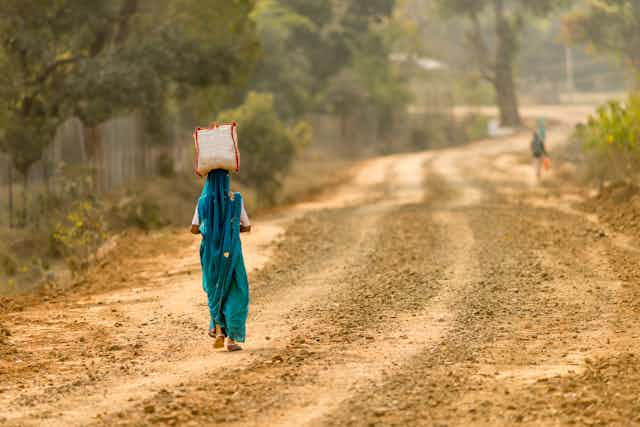“I tried to escape in the middle of the night,” Mahira* recalled. “With a small packed bag, I tiptoed towards the door thinking that he was asleep. Suddenly, he grabbed me from behind and attacked with a cutlass.” I sat, stunned, as she lifted her saree and revealed a wide scar below her knee.
In north India, there is a particular history of purchasing brides from other states due to the “male marriage squeeze”: there is an excess of eligible men but not enough local women for marriage. This is caused by an imbalanced child sex ratio caused by sex-selective abortion and female foeticide.
A recent study found that selective abortion could lead to 6.8 million fewer girls being born by 2030, with preference for sons highest in the north of country. These gender imbalances have increased cross-cultural and cross-regional marriages, which has in turn exacerbated trafficking of brides in India.
There is inconsistent and limited data on how many brides are trafficked in the country. But the numbers are significant. In 2013, a study that included 10,000 households across 92 villages showed that about 9,000 women were purchased from different states in forced marriages. And a door-to-door survey in 2014 found 1,352 trafficked wives living with their buyers in 85 villages in north India.
Men and women operate as brokers, agents or suppliers, to facilitate marriages with brides in other states. In many cases, young women are often tricked, manipulated, abducted or coerced into marrying “unmarriageable” men: those that are older, widows, disabled, alcoholic, separated from their previous wife, or financially unstable. For such men, it is convenient to purchase a bride across state for a cheaper price.
For my PhD research I spoke with several migrant brides in cross-regional marriages. Some were survivors of marriage trafficking. I found that these women often give consent to these marriages to escape poverty and the burden of dowry. Despite various challenges and difficulties, they frequently stay in these marriages for their children and for material, social and cultural reasons. I met them all in villages in the northern states of Haryana, Rajasthan, Assam and West Bengal.
According to the 2011 census, for every 1,000 men, there are 947 women in West Bengal. In Rajasthan the figure stands at 926 women, while in Haryana it is 877 (the lowest of all states). Assam and West Bengal, meanwhile, are known as “source states” – localities struggling with poverty, the aftermath of natural disasters and the burden of the dowry system.
Families in these regions are manipulated into sending their daughters away for work, unaware that this eventually leads to them becoming subjected to forced marriage in a different state. In other cases, families in source states arrange such long-distance and dowry-free marriages for at least one daughter, so that their other children are able to marry in the same state or region.
Mahira was one such wife. Her experience of exploitation, social isolation, abuse and a lack of basic human rights are far from unique.

This article is part of Conversation Insights
The Insights team generates long-form journalism derived from interdisciplinary research. The team is working with academics from different backgrounds who have been engaged in projects aimed at tackling societal and scientific challenges.
Mahira’s story
I met Mahira on a warm November afternoon in 2016 during my first visit to a village named Kherli in the district of Mewat, Haryana.
As a researcher from abroad, the locals were curious about my presence and Mahira and other women willingly shared stories about their marital journeys. I followed Mahira’s lead as we walked on a sandy trail passing cattle and hens, women drying cow and buffalo manure in front of their houses and on their walls, children playing around, and men fixing broken roofs or rebuilding their houses. Upon reaching her house we drank cold bottles of Thumbs UP (Indian cola) with seasoned chickpea leaves. A couple of other women joined us as we sat in a circle.
Mahira recounted vague memories of leaving her family home in the state of Assam at the age of 14, and then being forced to marry to a man in Haryana who was three times older than her. A distant family member had accompanied her under false pretence of touring the city of Delhi with her, where she was sold to a “broker”. It is believed that Mahira’s relative and the “broker” received money for the deal, but in many cases of marriage trafficking, parents who supposedly “sell” their daughters ultimately fail to receive any cash, even if promised. It is often only the so-called “marriage agent” that profits from the trade.
Mahira was forced to join other girls who were being auctioned off to men bidding for brides. She was purchased for Rs.8,000 (US$104) by a 45-year-old Sikh man. He lived in a small village in Haryana and worked as a driver and labourer in the fields. By 28, Mahira was a mother of three and earned Rs.2 per hour for working in the fields.
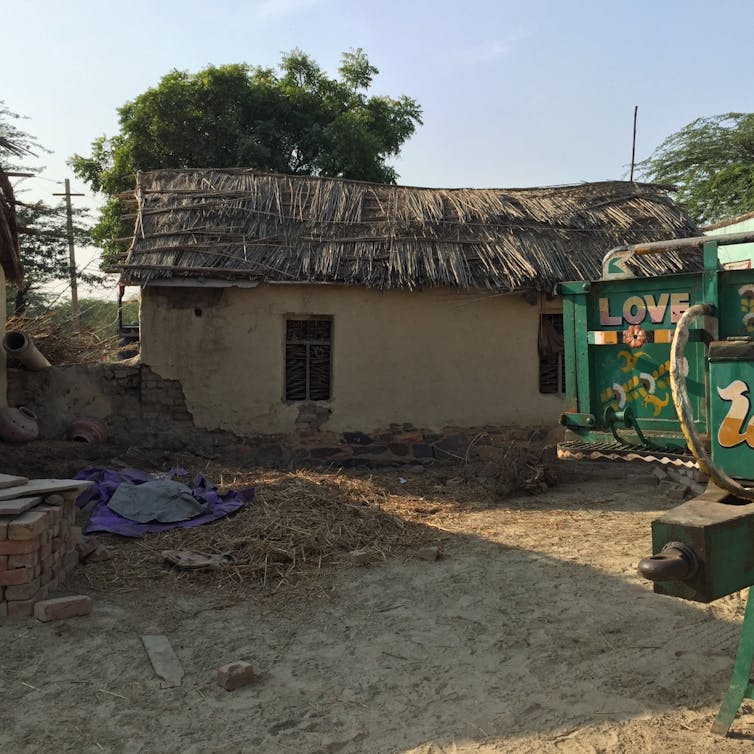
Life became a continuous struggle to deal with her alcoholic husband while engaging with strenuous domestic chores and work in the fields. For many of the women I met, it was difficult for them to remember their age because of how young they were when they got married (most of them were between 14 and 17 years old). And so it was not possible to figure out Mahira’s age. But the age difference between her and her husband was over 30 years.
Her husband died in 2014. Since becoming a widow, Mahira has been living alone with her children in a small village in Mewat, Haryana. She walked across the room and returned with a passport-sized photograph of her late husband – a man who looked to be in his late 60s with a long beard and a blank look on his face.
Some 15 years later, Empower People, a leading pioneer grassroots organisation that campaigns against marriage trafficking, helped Mahira to be reunited with her family in Assam. When they advised her to leave Mewat and settle back at home, Mahira told them she would stay where she was, replying: “Jaise mere bhagya mein likha hai, main who hi bhugtungi” – “I will endure whatever is written in my destiny.”
I also met Mahira’s cousin in Assam and heard his side of the story. He still wishes Mahira would return to their village in Assam, but understands and respects her reasons for staying in her marital home in Haryana. In other cases however family members abandon women after learning that they were sold to a groom in a different and state. In other extreme cases where women choose to be rescued and return home, they often experience social stigma and struggle to reintegrate.
Similar stories were told by other women whose marital journeys resembled Mahira’s. Most of them had limited or no contact with their family. In many cases, these women are considered “missing” or remain abandoned by their family due to the shame and stigma associated with being sold or abducted for marriage. These marriages sometimes break caste and religious boundaries, and several women face exclusion in their new marital communities. The men that purchase brides for marriage do not face social stigma to the same extent, even when brides often belong to a different caste or religion. It is more shameful for them to remain bachelors.
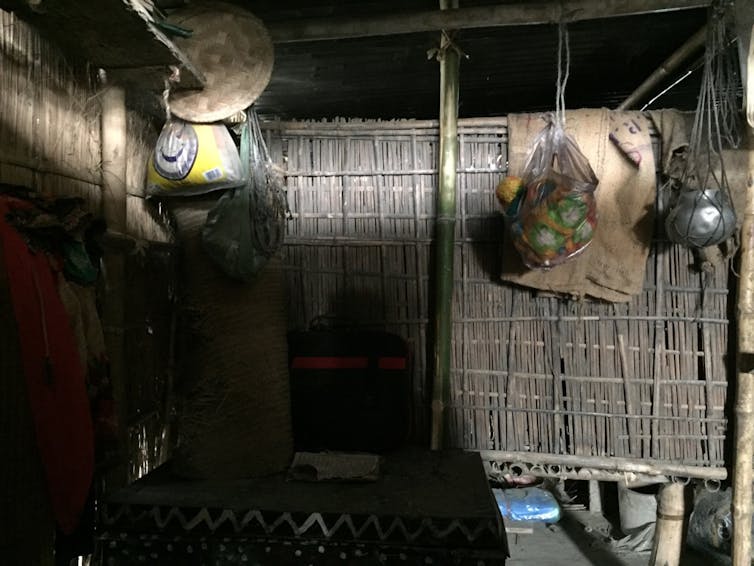
Many of the women found consolation in believing that their marital home, or “sasural” was written in their fate. But it was clear that their idea of “home” was distorted: it seemed as though many of these women didn’t really feel a sense of belonging to their marital home and community. They struggled with feeling like a foreigner in their marital village, and often felt isolated, abandoned and that their voice was subjugated.
The women in these marriages faced many problems. Their mobility and decision making was heavily restricted and they lacked basic reproductive and property rights. They regularly had to deal with financial issues and domestic abuse. Added to this, these women were also dealing with basic issues like a lack of water and electricity, not to mention the general scarcity of toilets and bathrooms. Brides from far-off states with different cultural backgrounds have a hard time adjusting.
‘Sons are pinnacle of the home’
My research has shown that there is more to marriage trafficking than the “marriage squeeze” and female scarcity. Intersections of gender, class, age and caste play a significant role in pushing women into exploitative situations. Girls from poor families living in precarious conditions are more vulnerable to such long-distance and cross-regional marriages.
The preference for sons among land-owning caste groups in the north is supported by local people’s disapproval of inheritance laws that acknowledge the rights of males and females equally. But there is a demand for girls and women for labour, domestic production and sexual pleasure. A famous saying in the Hindi language is: “Ladki paraya dhan hoti hai” – “a girl is someone else’s property.” As the Indian sociologist Ravinder Kaur has pointed out, a daughter is “dispensable” and “burdensome”, while a daughter-in-law is needed for “family wellbeing and perpetuation”.
There are laws against bride trafficking in India. The Immoral Trafficking Prevention Act (ITPA), the Bonded Labour Abolition Act, the Child Labour Act, the Juvenile Justice Act, and parts the Indian Penal Code are all used to penalise trafficking for commercial sexual exploitation and forced labour. But research has revealed several gaps and ambiguities in how international law conceptualises trafficking, migration and slavery. This makes it even more challenging to understand and recognise it.
‘He used to beat me with his shoes’
One reason it is so difficult to document the accurate number of trafficked brides is because they are often identified as domestic servants by the marital family and “agents”. The story of Sahar is an example of this.
Sahar was just 14 when she was forced to marry a man of 50. Born and raised in a small village of Bihar, she was the youngest of her 12 siblings. She told me that her cousin’s husband worked as a marriage broker and arranged her marriage with a man in Haryana. Sahar’s new husband was a widow and sought a second wife who would raise his three children and take care of domestic tasks such as cleaning and cooking.
Sahar told me that her parents were hesitant about the proposal because they wanted her older siblings to marry first. To convince them, the broker told them that the groom lived in Delhi and Sahar would not be too far away from home. They were given a false age of the groom and were told that he only had one child from his previous marriage.

Sahar spent the initial three months of her marriage crying and secluding herself from the rest of the village. Later, she found out that her parents were given a false address so that they would not be able to trace her. If they did find her, she said: “I would’ve returned home with them because I did not like it here and did not want to settle down. But they could not reach me and with no other choice, I had to get used to this place.” After pleading with her husband, Sahar was allowed to visit her parents once, under supervision of the marriage broker – her cousin’s husband.
Sahar’s husband died in Hyderabad when her youngest daughter was born (who unfortunately died at the age of two). She has been raising her three children on her own by working in the fields. When I asked whether her husband loved her, she replied:
He used to tell me that he did not kidnap or steal me from anyone, he married me … He used to beat me with his shoes and broke my bangles. It angered him when I told him I did not want to live here. He would punch me. I would cry all night and my bruises would become swollen. My mother-in-law did not say anything and I was not able to confront her. Now we have mobile phones, but back then, we only had letters to communicate. How would I have escaped or ran? Where would I have gone? How was I supposed to contact anyone?
Like several other women that I spoke to, Sahar’s views on marriage and feelings towards her husband were complicated. They were reduced to the mistreatment she faced.
He was an old man with a long beard. How could I like him? I could not even tie rakhi(a Hindu festival which involves sisters tying a threaded bracelet around the wrists of their brothers to celebrate brotherhood and love) on him. I was very young when I got married, but I learned to cook from other women in the village.
Her views and feelings are also shaped by social and familial norms that condition girls and women into believing that part of their duty as a wife is to remain submissive, compromised and engage in care work, child rearing, domestic and agricultural work with a great lack of financial security, respect and basic freedom. The idea or expression of love in these marriages are complex, and sometimes, absent. It is primarily the women’s unpaid care work and informal labour that informs their perceptions about their marital relationship.
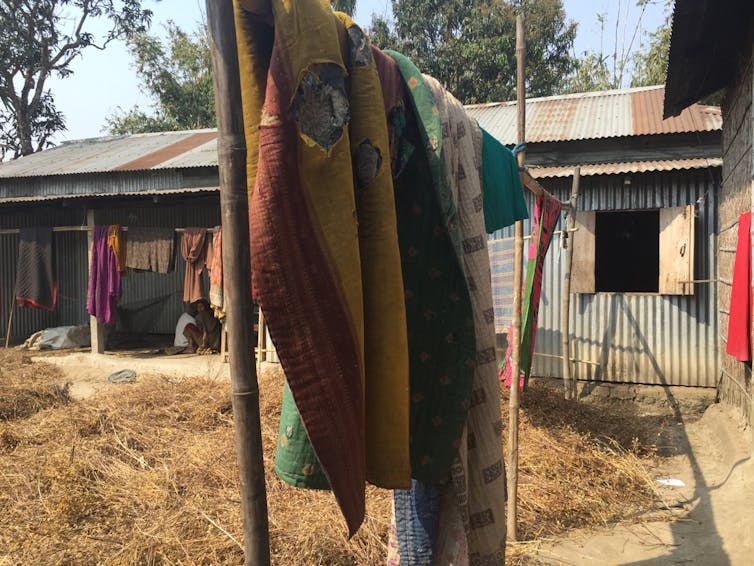
Safety and harm
In cases where girls are abducted or tricked into marrying out of state, their experiences of isolation, dislocation and their struggle for a sense of belonging are much more nuanced. Despite various constraints, some “choose” to stay and fulfil the marriage as a survival strategy.
Amreen was 15 when she was kidnapped on her way home from school. She lived with her mother, Mahnoor, and three brothers, ages 14, seven and three. Since their father abandoned the family, Mahnoor raised all four children on her own and paid for Amreen’s education. Amreen was first taken to Ambala in Haryana, 2,033km away from her home village. Then, she was taken to another village where she was married off to a man 12 years her senior. I asked Amreen’s mother how she ended up in Haryana. She said:
I don’t know. I returned home from a relative’s house and realised she was missing. A month later, I received a phone call from her and she explained that she married someone and lived in Haryana. Her husband took the phone and we chatted for a while, even though we did not speak the same first language. I visited her once and asked her to return home with me, but she refused to come back without her husband.
Around five years later, in 2015, Empower People was able to reunite Mahnoor and Amreen. The organisation and the police initiated a “rescue attempt” but Amreen refused to return home to her mother. She told Mahnoor that two men had forced her into a car and she ended up in Haryana. The husband, meanwhile, claims that he found her at a railway station and managed to rescue her from the abductors, and later, they decided to get married. When Mahnoor and Amreen reunited, Empower People found out that Amreen was pregnant. When I spoke to her, it had been six months since Mahnoor last spoke to her daughter. Amreen’s number is no longer active and she has not tried to contact Mahnoor.
Many women remain in these marriages because they do not remember their address nor do they have the means to leave or escape. That means there is a lack of sufficient and consistent data on marriage trafficking. When a woman’s natal family comes to know that a marriage has taken place through abduction or trade, in many cases they refuse to reconnect due to social stigma. Some feel relieved that the burden of dowry and economic baggage of unmarried daughters have been lifted. Amreen’s mother, however, genuinely wanted her daughter to return home. So why did she refuse?
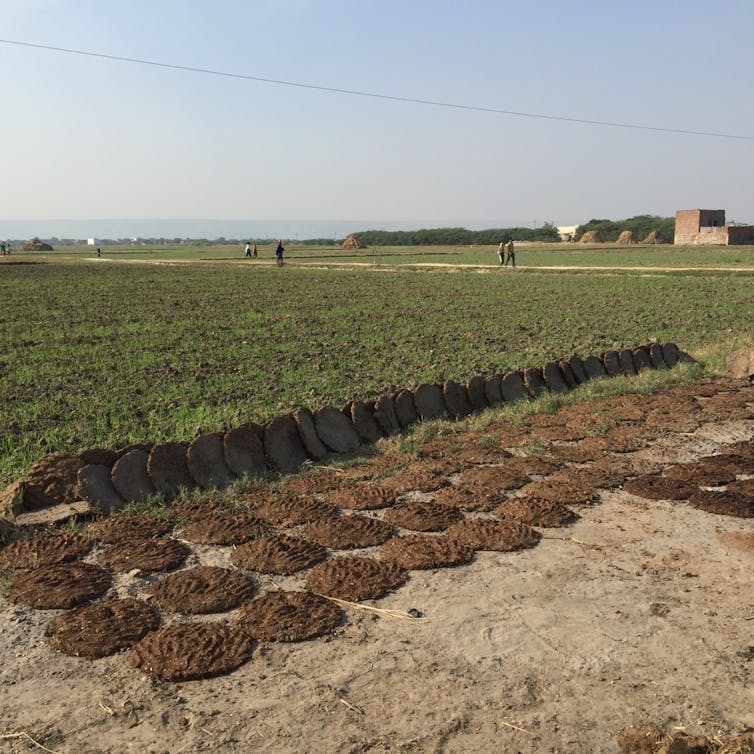
Mahnoor did not know how her daughter reached Haryana. All she knew was that after gaining consciousness, Amreen found herself to be very far from home, in a place where the local language was completely unknown to her. It is possible that she willingly decided to stay with her husband. While the motivating factors behind Amreen’s decision remain unknown, such survival strategies are used by many women and may shed some light on Amreen’s decision.
Amreen’s pregnancy might also be a key factor in her decision not to try and escape or be “saved” by the local NGO. It may seem like common sense to try and escape the oppression of a forced marriage. But Amreen – and women like her – also have material and security needs and a duty toward their children. This is why many choose to stay.
At the end of our conversation, Mahnoor told me: “I hope that she comes back so that we can live together again.”
More than a ‘trafficked bride’
The life stories of these women reveal that the issue of marriage trafficking cannot be equated with other, legally recognised, forms of human trafficking. It is a form of exploitation that is embedded within the institution of marriage – particularly the customs, rules and ideas around gender roles and gender disparity. Marriage trafficking perpetuates economic, reproductive and sexual violence under patriarchal domination. This leads to various degrees of marginalisation and oppression in women.
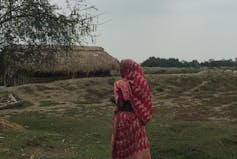
Listening to these women allowed me to understand and recognise their own desires and opinions. They talked about their goals, their childhood memories, their thoughts around love and marriage and the gendered division of labour. The women’s stories of survival reveal that – even in the face of regular oppression and abuse – they negotiate for their rights and “bargain” with patriarchy on a daily basis.
Acknowledging the stories, voices, adjustments, and survival strategies of migrant brides to learn about their lived realities provides one way forward. With the support of grassroots organisations and local activists, some of these women have become community leaders and mentors.
Many of these women do not necessarily want to be “saved”. They strongly believe that marriage trafficking and gender inequality must come to an end. But at the same time, they wish to be recognised for their contributions as a wife, mother, and widow – not just a “trafficked bride”.
*This article does not disclose any identifiable information of the research participants, and uses pseudonyms to maintain complete confidentiality.

For you: more from our Insights series:
Thousands of unidentified Zimbabweans lie in secret mass graves – and I want to find them
Mammoth task: the Russian family on a resurrection quest to tackle the climate crisis
To hear about new Insights articles, join the hundreds of thousands of people who value The Conversation’s evidence-based news. Subscribe to our newsletter.

